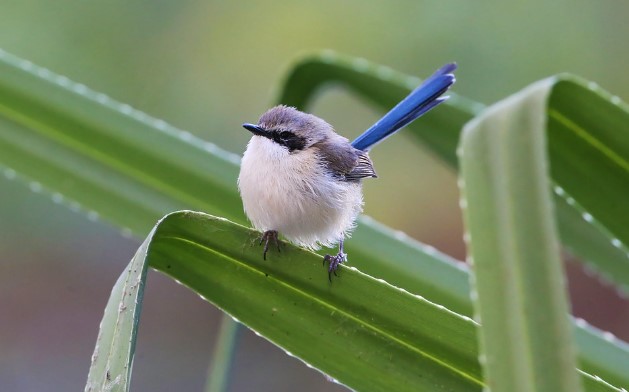Family: The beautiful Purple-crowned fairywren (Malurus coronatus) belongs to the Australasian wren family (Maluridae).
Other Names: Also known as Lilac-crowned Wren, Purple-crowned Wren, or Crowned Superb Warbler.
Size: A purple-crowned fairywren measures 135–155 mm in length.
Behavior & Habitats: In northwestern Australia, purple-crowned fairywrens live in permanent freshwaters topped with paperbark Melaleuca trees, lined by pandan Pandanus trees, and cane grass. While these habitats are widespread across northern Australia, fairy-wrens are restricted to just two subcoastal drainage systems, one in the Kimberleys and the other in the southwestern Gulf of Carpentaria.
Even in the Kimberleys, where their habitat has remained undisturbed, they are moderately common. Like other fairy-wrens, the Purple-crowned lives in small family groups of up to five or six or more birds, most likely consisting of the senior pair, and their young, and perhaps additional members. It is likely that the birds sleep in such huddles at night. During spring and early summer, breeding peaks; after that, males go into eclipse, losing their black collars and all but a hint of their purple crowns.

Feeding Habits: They search for food in loose groups, hop-searching through the undergrowth, clambering over flood debris, and sometimes climbing up into paperbarks to poke around. In order to maintain contact, they chirp softly. The diet consists of small insects, such as bugs, weevils, ants, and wasps, as well as small amounts of seeds. The foraging rounds are broken by rests, huddling, mutual preening, and duets. A twig in the undergrowth is the only place where the group gathers, cramming together and preening each other.
Call: During contact, the purple-crowned fairywren makes a high-pitched chipping chirp; during alarm, it churrs; and occasionally, it trills. Its song, however, is a shrill, bubbling reel, cheeper-cheeper-cheeper, with the first syllable rising and the second falling.

Nest & Breeds: Nesting and breeding occur between August and January; possibly throughout the year if conditions are suitable. Nest consists of paperbark strips and grass pieces; it may have a small platform at the side entrance (common but not universal); it is lined with fine rootlets. Nests are placed in pandanus crowns or dense clumps of cane grass between 0.5 and 4 meters high.
In the crannies of Pandanus crowns, only the female builds the nest, building a bulkier structure with an extended platform entrance than any of the other fairy wrens. Probably, she incubates without assistance, but both sexes-and perhaps other members of the group-feed her young. Birds who are being fed come and go furtively, traveling roundabouts and fleeing straight away.
Identification: During the breeding season, males’ crowns are glistening lilac or purple with black centers, surrounded by black bands running from lores to eyes. The back and wings are cinnamon-to-grey-brown in color. Greenish to deep blue tail, with white tips to all feathers except the central pair. White throat and breast shading to rufous-buff on flanks and belly. The eyes are brown. It has a black bill. Feet are fleshy to grey-brown in color. There is no collar on non-breeding birds, but a black line runs through the eyes; eyebrows are flecked white in non-breeding birds.
FEMALE: A female with a black band through her face but without the distinctive crown of a male. However, the fore-crown is bluish-grey; the brow and lores are white; and the cheek patch is red-brown.
IMMATURES: This is a female; the crown is entirely dull brown; the face is duller; the tail is longer and duller, with a thin white tip; the bill is browner.
Eggs: Purple-crowned fairywrens lay two to four eggs, usually three. The eggs are dull white, speckled with red-brown, especially at the larger end; they are broad-oval and measure 17 x 12 mm. The female is probably responsible for incubation.
Distribution: In Kimberleys, WA, and the southwestern Gulf of Carpentaria, this species can be found on freshwater rivers, streams, and lagoons fringed with Pandanus and paperbark Melaleuca.
Races: There are two races: one with a blue tail and sandy back in the Kimberleys and one with a green-blue tail and greyer back in the Gulf of Carpentaria.
Read More: Red-winged fairywren (Malurus elegans)
